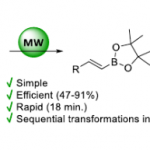The pHLIP system as a vehicle for microRNAs in the kidney
Verónica Miguel, Carlos Rey, José Luis Aceña, Francisco Maqueda, Carlos Fernández-Hernando, Diego Rodríguez-Puyol, Juan J. Vaquero, Santiago Lamas
Nefrología, 2020
DOI: 10.1016/j.nefro.2020.05.007
| MicroRNAs (miRNAs) are small endogenous RNAs that regulate gene expression through post-transcriptional repression of their target messenger RNAs. A study of changes in expression of certain miRNAs in the kidney has supplied evidence on their pathogenic role and therapeutic potential in nephrology. This review proposes a nanotechnology approach based on the binding of analogs or inhibitors of miRNAs formed by peptide nucleic acids (PNAs) to peptides with a transmembrane structure sensitive to a low pH, called pHLIPs (pH [low] insertion peptides). The review draws on the concept that an acidic pH in the microenvironment of the renal tubule may facilitate concentration and distribution of the pHLIP-PNA complex in this organ. In this context, we have demonstrated for the first time that targeted administration of miR-33 inhibitors with the pHLIP system effectively prevents the development of renal fibrosis, thus opening up this technology to new strategies for diagnosis and treatment of kidney diseases. |



 orcid.org/0000-0003-1367-3127
orcid.org/0000-0003-1367-3127

